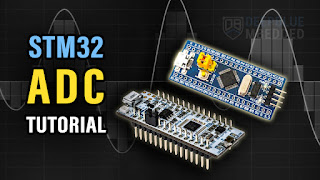What is GND in Arduino?
In the simplest terms, GND in Arduino stands for "Ground." It is the reference point for all voltage measurements in the circuit.
Think of it like the "sea level" for your electronic circuit. Just as we measure the height of a mountain from sea level, we measure voltage (electrical "pressure") from the GND point.
Key Concepts of GND:
1. The Common Return Path
GND provides a common path for electric current to flow back to the power source. Every circuit is a loop. Current flows from the power source (like the 5V pin), through your components (like an LED and resistor), and must return to the source via the GND pin to complete the circuit.
Without a connection to GND, current cannot flow, and your circuit will not work.
2. The Zero-Volt Reference
All voltage measurements on the Arduino are relative to GND.
The
5Vpin is +5 volts relative to GND.The
3.3Vpin is +3.3 volts relative to GND.If you measure the voltage between a GND pin and another GND pin, you will get 0V.
3. Stability and Safety
GND acts as a common, stable reference that helps prevent erratic behavior and electrical "noise." It also provides a safe path for stray currents, which is crucial for safety, especially when dealing with higher voltages or AC power.
Physical GND Pins on an Arduino
An Arduino board has multiple GND pins. They are all electrically connected to each other and serve the same purpose. You can use any of them.
They are typically labeled
GND.They are often located near the power pins (
5V,3.3V,VIN).On most Arduino boards, the GND pins are black or have a black background.
You can see the three GND pins highlighted on this Arduino Uno board:
(Imagine an image here showing an Arduino Uno with circles around the three GND pins)
A Practical Example: Lighting an LED
This is the perfect circuit to understand GND's role.
Correct Circuit:
Connect the
5Vpin to the positive leg (anode) of an LED (through a resistor, e.g., 220Ω).Connect the negative leg (cathode) of the LED to a GND pin.
What Happens:
Current flows from the
5Vpin (high pressure).It goes through the LED and resistor, lighting the LED.
It then flows into the GND pin, completing the loop back to the Arduino's power supply.
What if you don't connect to GND?
If you leave the LED's negative leg unconnected, the circuit is open or broken. No current can flow, and the LED will not light up.
Important Distinction: Earth Ground vs. Circuit Ground
Circuit Ground (on Arduino): This is a reference point. It is not necessarily connected to the physical earth. It's sometimes called "Common" or "Signal Ground."
Earth Ground (in your wall outlet): This is a physical connection to the earth via a metal rod buried in the ground. Its primary purpose is safety, to prevent electric shock by providing a path for fault currents.
In low-voltage, battery-powered Arduino projects, your GND is almost always just a circuit ground, not an earth ground.
Summary
| Aspect | Description |
|---|---|
| Full Name | Ground |
| Primary Role | The zero-volt reference and common return path for electric current. |
| Analogy | Sea level for measuring height. |
| In a Circuit | Completes the loop, allowing current to flow. |
| Voltage | Always 0V by definition. |
| Visual Cue | Black pin or labeling on the board. |
In short, whenever you build a circuit with an Arduino, you will almost always need to connect one wire to a GND pin to make it work. It is one of the most essential and frequently used connections.
.jpg)



评论
发表评论